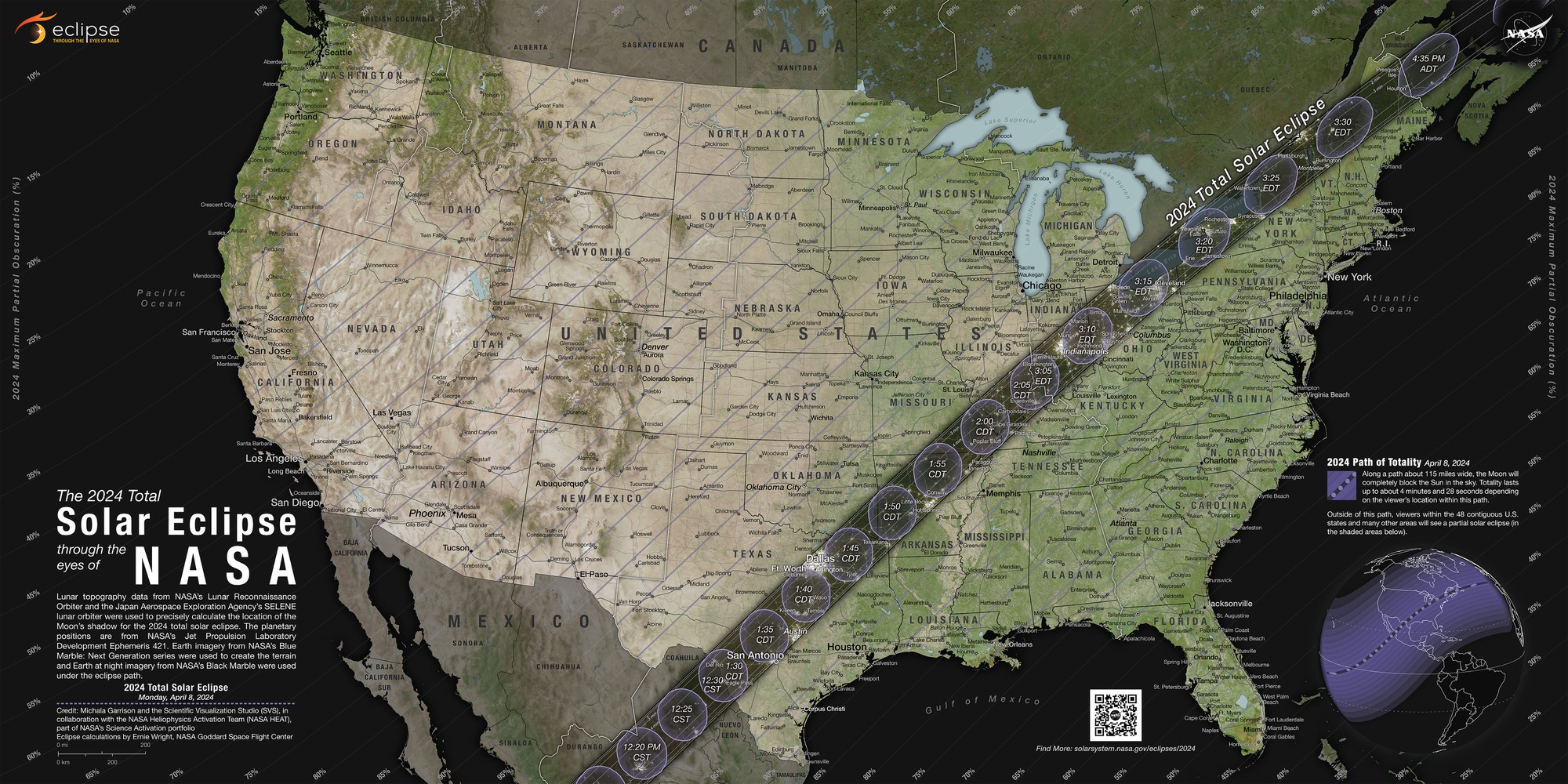Makayla Verbruggen, a Humber FMTV program student, showed some interest in what’s become the highly anticipated solar eclipse.
“I think it would be kind of cool to witness something like that,” she said.
After learning that this is an event that may not happen again for more than a century, Verbruggen was much more enticed by the opportunity to go out and watch it.
The total solar eclipse on April 8, 2024, and one spot for the best view of this phenomenon in Canada is Niagara Falls, Ont., at 3:19 p.m. It could last between an hour and three hours, depending on location.
NASA will be broadcasting the eclipse live on its website for those unable to watch it in person.
The American space organization is also providing charts and visualizers on its site along with some quick facts including when the next total solar eclipse is expected to be.
“After the total eclipse on April 8, 2024, the next total solar eclipse that can be seen from the contiguous United States will be Aug. 23, 2044,” NASA posted under the quick facts section of their website.
The anticipation to watch the total solar eclipse is extremely high when the next one is predicted to be 20 years later and that is solely for the United States of America.
The Greater Toronto Area is not expected to see another total solar eclipse until Oct. 6, 2144, according to the W. J. McCallion Planetarium from McMaster University.
Niagara Falls has also issued a state of emergency for this event to allow officials to handle the predicted influx of people who will show up to watch this event.
Tatiana Paulin, a professor of Natural Science in the Faculty of Liberal Arts and Science at Humber College, said huge traffic jams and large crowds are expected as people try to get to areas where they can experience the eclipse.
“And declaring this a state of emergency might help them manage the crowds a little better, have more resources available, et cetera,” she said.
Niagara Falls lands in the path of totality for the eclipse, the reason Paulin said she believes crowds are being drawn to the border city.
She is adamant people do not want to miss the opportunity to check out this phenomenon in person and has several recommended locations.
“Other areas close to us, such as Hamilton, for example, are just inside the outer edge of the path of totality,” Paulin said.
“But if you can go a little further south, right anywhere along the northern shore of Lake Erie,” she said. “Just keep driving till you hit Lake Erie, park anywhere. Any local park. Set up a lawn chair and you are good.”
Paulin said the totality of the eclipse will be brief, between one to three minutes depending on location.
For those not watching the eclipse in the path of totality, like students at Humber, safety is especially important.
Proper eye protection, like specifically made solar eclipse glasses, should be worn throughout the event.
Because Humber North campus not being a part of the path of totality, it is considered a partial eclipse, and the solar eclipse glasses should remain on.
Paulin said there may be some eclipse glasses available at the Math and Writing Centre at Humber North.
They will be available on April 8, 2024, at 2:15 p.m. and because quantities are limited, it is first come first served. Participants may have to share the glasses while watching the eclipse.
The group will be walking over to the Arboretum to watch and take in this phenomenon.
Verbruggen said she decided to stay in Etobicoke for the total solar eclipse and plans to find the time to step outside to enjoy this event.
“I’m going to be on campus because I have classes, so I think I’ll probably stick around here and watch it,” she said.

